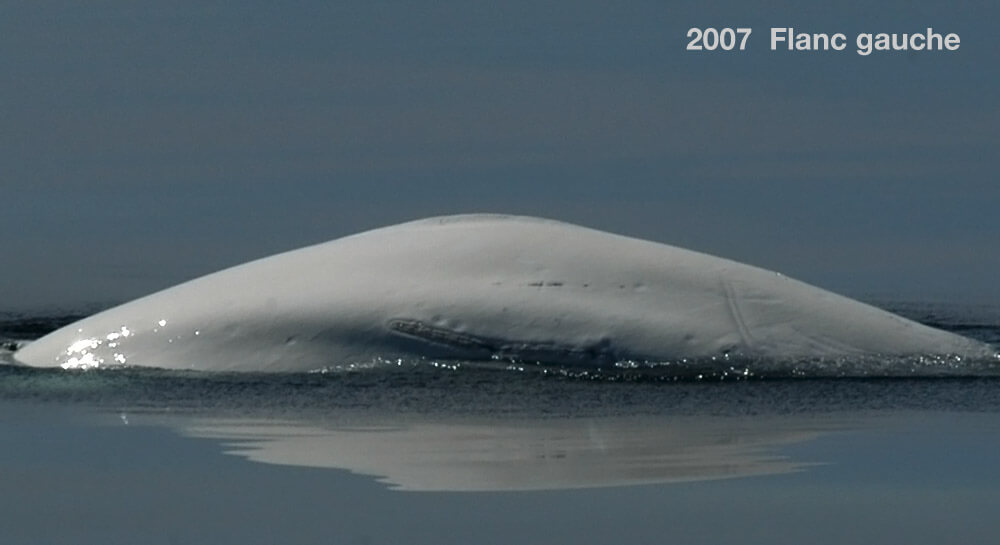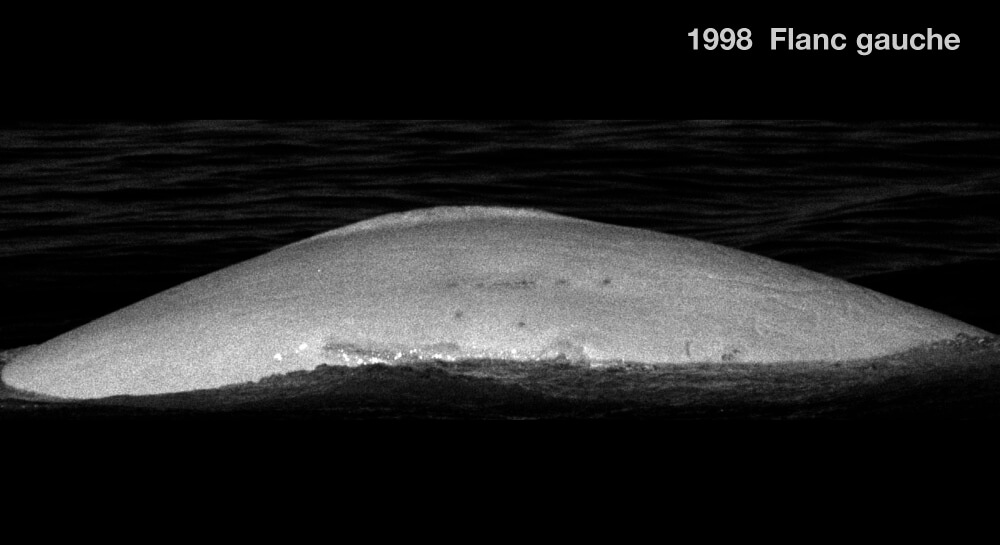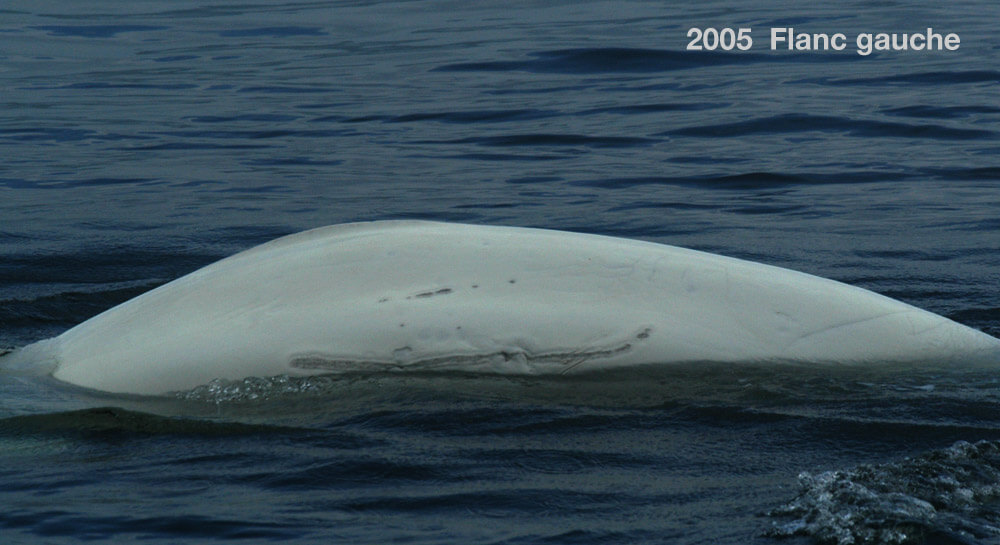Bilou
Beluga


Adopted by The riverside municipalities of the St. Lawrence
-
ID number
DL1308
-
Sex
Male
-
Year of birth
Around 1990
-
Known Since
1997
Distinctive traits
We’re not yet able to identify Bilou from the right side. His left flank shows several scars, the main one of which being nearly twice as long as his dorsal crest.
Life history
It was in 1997 that we encountered Bilou for the very first time. He was pale gray at the time. Beginning in 2003, he was always noted as being “white”. Belugas fade from gray to white in colour between the ages of 12 and 16. Bilou would therefore have been born around 1990. His sex was confirmed by genetic analysis of a biopsy taken in 1998: Bilou is a male.
Bilou has been regularly observed in large, highly dynamic herds composed essentially of young males. Like adult males, young males stay away from herds of females accompanied by young in the summer. In contrast with adult males, young males do not seem to form lasting associations with other males.
These associations are established a little later in their lives. They may play an important role in belugas’ reproductive lives. To date Bilou has no known faithful companion.
How Bilou’s story unfolds will teach us volumes on the evolution of belugas’ social lives. By better understanding how belugas live, we will better be able to protect them.
Observations history in the Estuary
Years in which the animal was not observed Years in which the animal was observed
Latest news
We’re with Bilou off the coast of Île aux Pommes near the south shore. He’s in one of the seven groups of young grayish belugas that are stirring at the water’s surface. Their tails and heads can be seen protruding from the water. A calf passes from one group to another without appearing to us to be accompanied by any one adult in particular. When we leave the sector more than 70 belugas are present.
We observe Bilou in the Saguenay Fjord as part of a herd of some thirty individuals. He swims alongside belugas DL2450 and DL2026. The animals are active and roaming around Baie Sainte-Marguerite. The majority are good-sized white adults, with a few gray juveniles. We assume they are males. The Saguenay is a place where the sexes and generations of belugas intermingle in summer : networks of males intermingle with communities of females.
Bilou swims among hundreds of his peers in the heart of the Saguenay Fjord. He’s in a very dynamic herd of young adults, or “teens”. The animals strike the surface with their tails and even stick their heads out of the water. All this agitation is difficult to interpret. Until we unravel the mysteries of beluga whale life, we classify these behaviors in the broad category of “social activities”.
Sponsors
The riverside municipalities of the St. Lawrence Solidary adopted Neige, Nics, Bilou, Cica and Solidaire (2014).
Beauharnois; Bécancour; Candiac; Carleton-sur-Mer; Charlemagne; Chute‐aux‐Outardes; Châteauguay; Contrecoeur; Grande Rivière; La Pocatière; Lanoraie; Les Bergeronnes; Louiseville; Lévis; Matane; Montmagny; Montréal; New-Richmond; Notre-Dame-des-Sept-Douleurs; Percé; Pincourt; Port-Cartier; Québec; Repentigny; Rimouski; Saint-André; Saint-Zotique; Sainte-Anne-de-Sorel; Sainte-Anne-des-Monts; Saint‐Ignace‐de‐Loyola; Saint‐Siméon; Salaberry-de‐Valleyfield; Sept-Iles; Sorel-Tracy; Tadoussac; Varennes
Click on the names below to discover texts, drawings and videos composed by children of participating schools on Facebook as part of the Our Beluga’s Name is… contest.
Neige was named by the special education class of the École Saint-Alexandre in Port-Cartier.
Nics was named by the 5th and 6th grade class of the École Élisabeth Turgeon in Rimouski.
Bilou was named by the 3th grade class of the École de Ste-Thérèse-De-L’Enfant-Jésus in Saint-Jérôme.
Cica was named by the 2th grade class of the École de la Ruche in Lévis.
Solidaire was named by the 5th grade of the École Our Lady of Pompei in Montreal.
Bilou a été nommé par la classe de 3e année de l’école de Ste-Thérèse-De-L’Enfant-Jésus de Saint-Jérôme.
Cica a été nommé par la classe de 2ième année de l’école de la Ruche de Lévis.
Solidaire a été nommé par la classe de 5ième année de l’école Our Lady of Pompei de Montréal.






